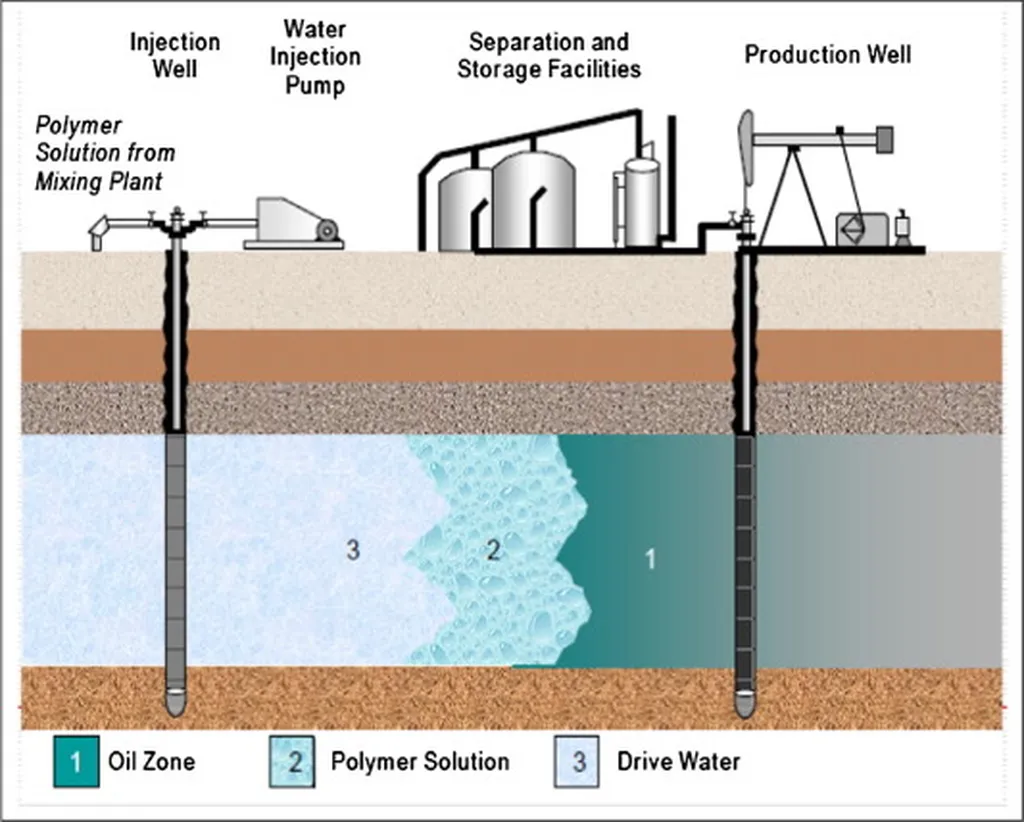In the relentless pursuit of maximizing oil recovery, researchers are turning to innovative solutions to combat the age-old challenge of declining oil production and increasing water cut in mature fields. A recent study led by Dmitry G. Podoprigora from Empress Catherine II Saint Petersburg Mining University sheds light on the promising potential of crosslinked polymer compositions for enhanced oil recovery (EOR). Published in the journal *Известия Томского политехнического университета: Инжиниринг георесурсов* (translated as *Izvestiya of Tomsk Polytechnic University: Engineering of Georesources*), the research offers a comprehensive review of these advanced materials and their applications in the oil and gas sector.
As oil fields age, the efficiency of traditional extraction methods dwindles, leaving significant amounts of oil trapped in the reservoir. “The development of oil fields is often accompanied by a decrease in oil withdrawal and an increase in water cut of production wells,” explains Podoprigora. This phenomenon is particularly prevalent in reservoirs with heterogeneous rock structures, where untreated oil-saturated intervals remain untapped. To address this issue, the study explores the use of crosslinked polymer compositions, which have emerged as a promising EOR technology.
The research categorizes these polymers into two main types: synthetic polymers, such as partially hydrolyzed polyacrylamide, and biopolymers, with xanthan gum being the most commonly used. These polymers are further classified into three distinct systems: colloidal dispersed gels, pre-crosslinked granular gels, and in-situ gelation polymers. Each system employs different types of crosslinkers, tailored to specific reservoir conditions.
The study underscores the importance of selecting the appropriate polymer composition based on the unique geological and physical characteristics of each oil field. “By understanding the basic principles and mechanisms of action of these crosslinked polymer systems, researchers can optimize the choice of reagents for enhanced oil recovery,” notes Podoprigora. This tailored approach ensures that the selected polymer composition effectively targets the untreated oil-saturated intervals, thereby increasing the coverage of productive horizons and ultimately boosting oil recovery.
The commercial implications of this research are substantial. As the energy sector continues to grapple with the challenges of declining oil production, the adoption of advanced EOR technologies like crosslinked polymer compositions could significantly enhance the economic viability of mature oil fields. By extending the productive life of these fields, operators can defer costly investments in new exploration and development projects, thereby optimizing their portfolios and improving overall returns.
Moreover, the insights gained from this study could pave the way for future advancements in EOR technologies. As researchers continue to refine the application of crosslinked polymer compositions, the energy sector can expect to see improved recovery rates, reduced water cut, and enhanced operational efficiency. These advancements not only benefit oil producers but also contribute to the broader goal of maximizing the utilization of global oil resources.
In conclusion, the research led by Dmitry G. Podoprigora offers a compelling glimpse into the future of enhanced oil recovery. By harnessing the power of crosslinked polymer compositions, the energy sector can unlock new opportunities for maximizing oil production and optimizing the performance of mature fields. As the industry continues to evolve, the insights gained from this study will undoubtedly play a pivotal role in shaping the next generation of EOR technologies.

